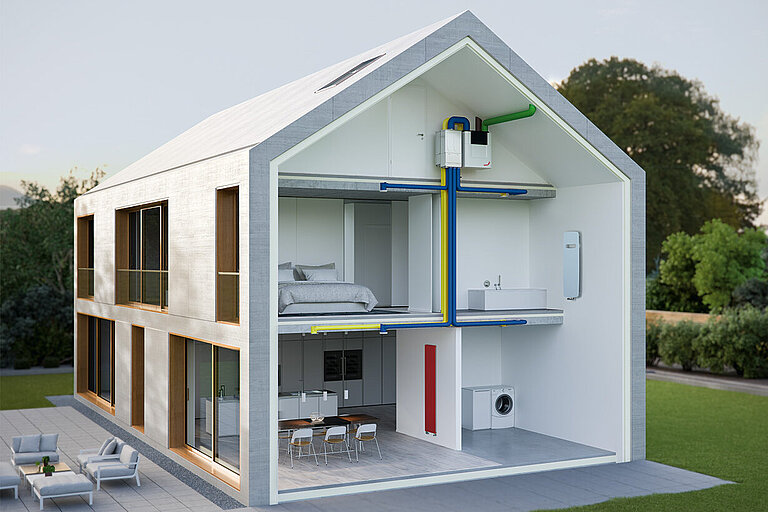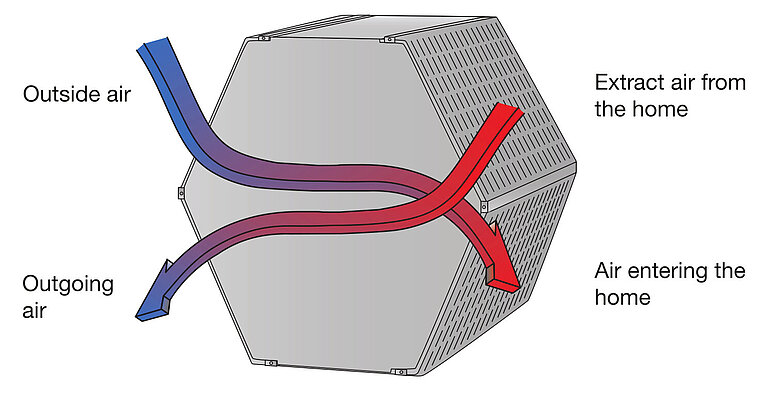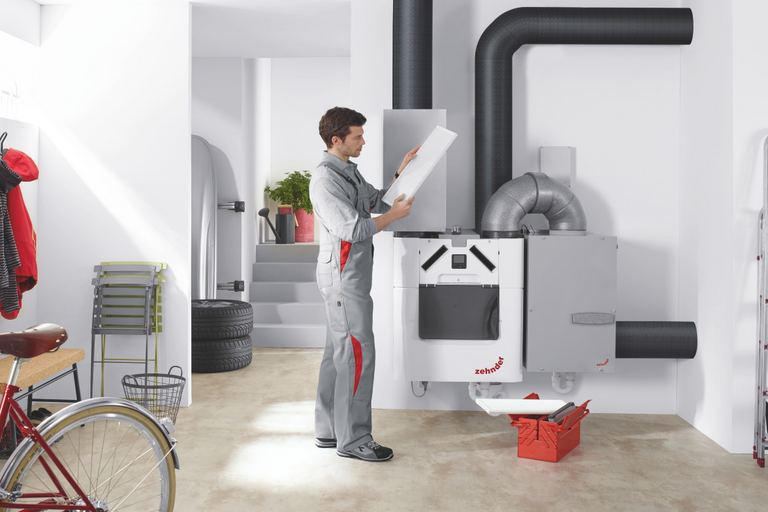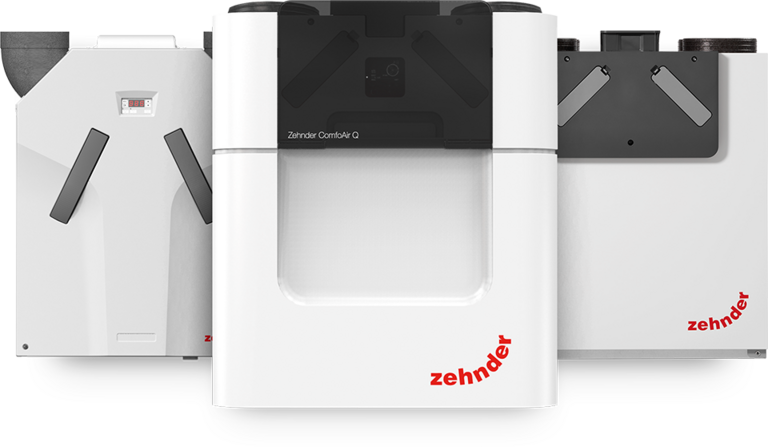

What is balanced ventilation?
The advantages of balanced ventilation or a ventilation system D?
Which ventilation system do you choose in an apartment building or in a home? And what is the best choice for new construction and what works well for renovation? Are you going for a ventilation system A, B, C or D? A balanced ventilation system (or ventilation system D) is nowadays preferred, especially in new construction projects and thorough renovation projects. We are happy to explain why.
In the homes of our parents and grandparents there was no ventilation system at all. Or is it? Ventilation took place in a 'natural' way: Windows and doors were opened and air could circulate freely through cracks and crevices. The houses at that time were barely insulated. This was certainly not an ideal situation for the ventilation of the bathroom or other (humid) areas. Fortunately, this has changed a lot over the years.
Due to stricter legislation and regulations regarding ventilation for new and renovation projects, homes are now better insulated than ever. This makes mechanical ventilation impossible. But which ventilation system is most suitable for optimal ventilation and energy savings?
The evolution towards airtight construction gives ventilation system D an advantage. Because while with ventilation system C the fresh air is still supplied naturally via ventilation grilles in the window or wall and is mechanically extracted using a ventilation box, with system D the entire ventilation process is fully controlled and mechanical. This makes it a lot more energy efficient and keeps the indoor climate perfectly balanced.
Anyone who builds airtight - and wants to meet the most recent energy performance standards - would do well to invest in balanced ventilation. The price of a ventilation system D may be slightly higher because two fans are needed for the mechanical supply and exhaust of the air, but this makes ventilation much more efficient and the energy bill will be cheaper.
The basic principle of balanced ventilation is the same as any other ventilation system: fresh air is supplied to 'dry' living areas such as the living room, bedroom and office. In addition, the moist air is discharged through 'humid' areas such as the kitchen, bathroom and toilet. With a ventilation system D, the supply and discharge is completely mechanical by two fans in the ventilation unit. They keep each other in balance. The flow rate is automatically and constantly regulated depending on the surface area of the different rooms and the desired comfort temperature and energy performance. That is why this system is also called balanced ventilation (and ventilation system D).

With system D there are no air vents in walls or windows as with ventilation system C. The fresh outside air is drawn in from outside via valves on the roof or in the wall. The ventilation in the house is then controlled via a network of ventilation ducts and fans. All air vents and valves (to remove the used indoor air in the wet areas) are integrated into the interior as subtly and inconspicuously as possible. There are numerous aesthetic solutions available today, so these grilles and valves do not have to stand out.
Suppose you install a balanced ventilation system in a home, then the ventilation unit in the attic draws in cold outside air of 10°C in winter. The heat exchanger in the ventilation unit heats the air by recovering the heat from the extracted air and thus heating the supplied air from 10 to 21°C. The heat then travels to the different rooms via ducts and air grilles. In summer the opposite happens. The cold in the indoor air is then used to cool the drawn in warmer air from outside and then conduct it through the home. Thanks to the installation of a ventilation system D, the heating or air conditioning does not have to run or does not have to run as hard, which means that the total energy consumption of the home will ultimately be lower.
Ventilation through balanced ventilation is the healthiest, comfortable and energy-efficient ventilation system. But it not only ensures an optimal, draught-free oxygen supply that keeps the rooms moisture and mold free: Thanks to the integration of a ventilation system D, this central ventilation also helps to keep energy consumption in balance. A heat exchanger heats the incoming air with the outgoing air. This is done by allowing two air streams to flow close to each other, without mixing them. With balanced ventilation, this is done using a heat exchanger where the air supply and exhaust are separated by a thin membrane.

Ventilation keeps the air healthy. A good ventilation system guarantees good air quality in the home. To further improve the air quality, your ventilation unit can be equipped with special particulate filters. They filter pollen and particulate matter from the supplied air. Ideal for people who suffer from allergies.

Ventilation systems with heat recovery offer many advantages. This ensures that you ventilate your house with fresh outside air, without changing the indoor temperature. By ventilating with heat recovery, as much as 95% of the heat or cold from the exhaust air can be returned to the supply air. In addition, with a ventilation unit with balanced ventilation, you save a lot on your energy costs and you comply more quickly with legal provisions regarding sustainability. In addition, balanced ventilation provides more living comfort and is good for your health.
Finally, this: just like a ventilation system C, the mechanical ventilation box and the central extraction system of system D are easy to install and maintain. Operation is always user-friendly thanks to the display with an intuitive screen. There are also various solutions available in the Zehnder range, depending on the area of application, budget and the desired energy performance. The Zehnder ComfoAir PRO 300 offers a high-quality and price-conscious solution for small to medium-sized residential units.
Discover all Zehnder solutions for balanced ventilation
